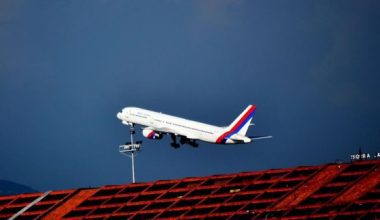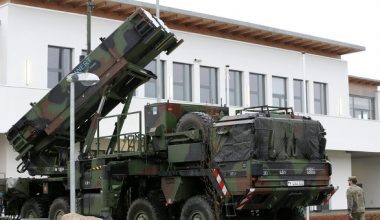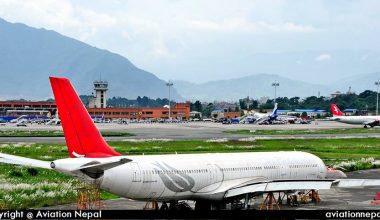Manang Air since 1997 provides personalized services to its clients in all the avenues of its flying, be it: adventure flights, search and rescue, medical evacuation, aerial work, helicopter excursions, expedition work and other customized flights as per the requirement of the clients. The area of operations of the Company is not only restricted to personalized services but includes an operation to support trekkers, pilgrims and also offer the air Logistics support to various government agencies of Nepal.
We had an opportunity to talk with Mr. Raju Neupane, Operation, Safety & Corporate chief of Manang Air to explore more about the company and the helicopter operations in Nepal.
Here is our brief talk with Mr. Raju Neupane:
1. How long have you been working in the aviation field? Would you mind telling us about your career history in brief?
I started my aviation career in 1992 as an operation officer at Everest Air. Then after 1999, I joined Manang Air. I also worked 3 years for Fishtail while Manang was closed from 2011. Now, I am working as Operation, Safety and Corporate Manager at Manang Air.
2. Manang Air is one of the progressive company in Nepal. What is the current status of the company in the aviation market of Nepal?
We are operating two helicopters at present and we have utilized both the choppers fully due to which we are not in loss. Till 2009, we were using MI17 helicopters but after the introduction of small helicopters like AS350B3e, the revenue generation is considerably high at present.
3. How do you analyze the changes in Nepali aviation after Manang Air came into existence from 1997?
There was not a good market scenario like as today in 1997 as there were only MI17 helicopters in operation. After the small helicopter like AS350B3e (H125) entered into the operation in Nepal, the helicopter flights are increasing due to its better performance in high altitudes and difficult terrains. When Manang Air started its service in 2000, passenger flight and tourism market were not in a full-scale position as MI17 used to operate cargo flights with local passengers occasionally. At present, the tourism market is booming along with the increase in trekkers’ number. Besides, Nepalese people are also preferring to use helicopter services these days.
4. What are the core services that the company focuses on or gives a higher priority?
Our company mainly focuses on medical evacuation, high altitude rescue, and other delicate flights. To become sustainable, helicopter company like us must focus on such type of flights and also operate flights on the high market area like Khumbu and Annapurna region
5. Besides Manang, there are lots of other helicopter companies in Nepal, how is the competition among the airlines? Is market share beneficial for all?
Competition is very tough these days because there are many helicopter companies conducting a common type of flights. However, every airline is sustaining in the Nepali aviation market even though the price figure for helicopter services has plummeted due to competition as compared to 2009.
6. Can you point out security issues or any safety hazard on Nepalese sky especially, those which helicopter companies are facing?
High altitude operation is risky in Nepal due to vibrant terrains and erratic weather phenomena. Weather facility is not at its best in the Nepalese sky as airlines have to operate flight with the dependence on the phone. Heliports have been allocated at different region but without required facilities and infrastructures.
7. New helicopter companies are in the verge of joining the industry while existing companies are adding fleet. Is this trend healthy or may lead to something erratic?
Fleet addition has been done according to the market strategy of the airline company. This trend has created more competition in the market. As helicopter operation is a seasonal business so, at the time of off-season, companies bear certain loss due to less or no flights. That’s why the trend has yielded healthy competition whereas created some diminution in revenue generation.
Manang Air AS350B3e (H125) ‘9N-AMV’ at Tribhuvan International Airport
8. As helicopters have to perform numerous risky rescue operations. How challenging is it to operate helicopters in vibrant terrains with unpredictable weather phenomena of Nepal? And how Manang keeps the safety to its fullest at those times?
Nepalese terrains are very much challenging and most of the crashes happen in CFIT (Controlled Flight into Terrain) region. In addition, helicopter company is not allowed to conduct IFR (Instrumental Flight Rule) flights as the flight is fully based on VFR (Visual Flight Rules) until and unless the flight gets entangled in en route weather. So, Manang Air conducts CFIT and safety briefings mandatorily before sending crews to flight. We have been running such precautionary method and training programs for safe flight operations.
9. Aviation Ministry has been investigating on fake helicopter rescue case. How do you address this case on behalf of Manang Helicopter?
This case holds its presence from 2009 as the total business of helicopter operation came into the hands of agents. Agents act as a wholesaler who provides handsome business for helicopter companies and gains trustworthiness as well as the good relation. Helicopter companies, on the other hand, become delighted to receive revenue from one person rather than collecting from numerous clients itself. This is where the agent started a fake rescue in collaboration with trekking guides, hotels, and other respective organizations.
We helicopter companies carry out rescue operation as it is our prime responsibility however, the agents create fake rescue scenes with the support of hotels and tourist guides which we are not aware of. Thus the rescue flight is fake from the point of origin and helicopter companies are unknowingly indulged in the fake rescue case. We are trying to control such cases with our full effort and are very cautious of such act.
10. What are the setbacks that need to be reformed for a safe, efficient and smooth operation of helicopter services in Nepal?
Safety must be the higher priority for which all airlines and aviation authority of Nepal are giving their best to enhance safety. We are very cautious towards the aviation safety. As we have traffic congestion problem, communication technology, weather facility problems so, there are lots to improve from both the operators and regulatory sides.
11. What is the future aim of Manang Air?
Currently, we are operating two AS350B3e (H125) helicopters with base in Kathmandu and within next year we are planning to add one more AS350B3e and expand our services more. We are also exploring new destinations like Damodarkunda.
12. How do you analyze employment opportunity in Nepalese Aviation?
There is a good employment opportunity in Nepalese Aviation however, there is no good policy for aviation jobs in Nepal as the salary and benefit differ erratically among the companies. There is a lack of systematic and managed way of providing aviation jobs here in Nepal.
13. Your views, suggestions on how the media can influence aviation.
Media plays a vital role in influencing aviation market if the news published contains appropriate and true contents otherwise, it may create misunderstanding among the public. Media personnel should not show urgency in publishing news instead they must dig out the real scenario and then publish accordingly. Besides, Medias these days are focused on more fancy news rather than researching on some effective topics. For instance, the fake helicopter issue case had never been reported by Nepalese media, it had to be done by some foreign reporter. As per my view, this is where media should be active.








